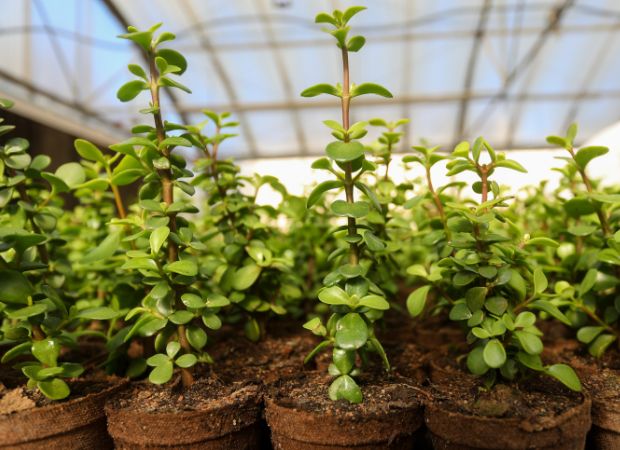Spekboom, the bright green-leafed succulent native to South Africa, also known as pork bush or elephant bush, first drew attention for its incredible ability to remove large quantities of carbon dioxide from the atmosphere. While most plants have this ability, the Samara reserve explains that spekboom thickets, found mainly in the Eastern Cape and Klein Karoo, outrank the Amazon rainforest’s ability in this regard, much needed in a world of increasing climate change. With further research into this wonder-plant, a multitude of perks have been discovered, including its potential to add texture, flavour and colour to everyday dishes.
Spekboom has a high nutritional value, often favoured by black rhinos, elephants, and kudu in the wild. Not only savoured by animals, spekboom’s slightly tart, lemon-like flavour profile and high content of vitamin c makes it fit for human consumption. Beyond its traditional use to cure ailments of dehydration in harsh environments or to sooth sore throats, the leaves offer great culinary potential as they effortlessly lighten up any salad, and add a punch to salsas, condiments and even stews.
One will quickly discover an interesting trait of spekboom when trying to process these leaves into a delectable meal. When bruised or cut, the leaves release a liquid that is quite thick and almost slimy – not words often used to describe enjoyable food! Not to fear, the liquid is full of flavour and can be beneficial when used in a pesto. Simply replace the herbs in a pesto recipe with spekboom leaves, blend with additional ingredients and enjoy the fresh citrus flavours with a wrap, salad or on a crisp slice of toasted sourdough. The chopped leaves also make for an upgraded version of an ordinary salsa when mixed with some red onion, tomato, olive oil and vinegar, best enjoyed with rich cheeses and fresh bread. For the adventurous cook, the leaves can be cooked down with spices and sugar into a chutney consistency to be enjoyed with fish, burgers and even a cheese platter. Or take it slow and put a playful twist on condiments such as mayonnaise or tartare sauce by simply adding chopped spekboom leaves. If the consistency of these processed bright leaves does not fit your appetite, many other methods to incorporate them await. Small spekboom leaves can be added whole to any salad to add a crunch and some zesty notes. Whole sprigs can also be added to meat stews, tomato bredies or potjies, similar to the function of a bay leaf, to impart some acidity and freshness. Spekboom leaves are beautiful and juicy as a garnish, either fresh or deep fried on meat dishes, pastas and salads for an additional crispy texture. The slightly sour lemony notes can easily be incorporated into homemade juices for extra zing and increased vitamins. Due to their versatility, any foodie will be able to experiment with the leaves, whether adding them chopped to your next frikadelle, lasagne or pizza, or perhaps venturing to the alluring concept of a spekboom sorbet.
RECIPE: Braaied spatchcock chicken with spekboom salsa
There is not much the spekboom can’t achieve, from livening up your living space to feeding our much-loved South African wildlife, treating small ailments while on long hikes, and adding a whole new level of experimentation to your cooking repertoire. Being nearly impossible to kill, easily plantable in any type of soil, fun to eat and extremely beneficial to our ever-changing climate, spekboom should form part of every household. So, surprise your guests at the next braai or dinner by adding some spekboom to your menu and share the knowledge of this miracle plant.

